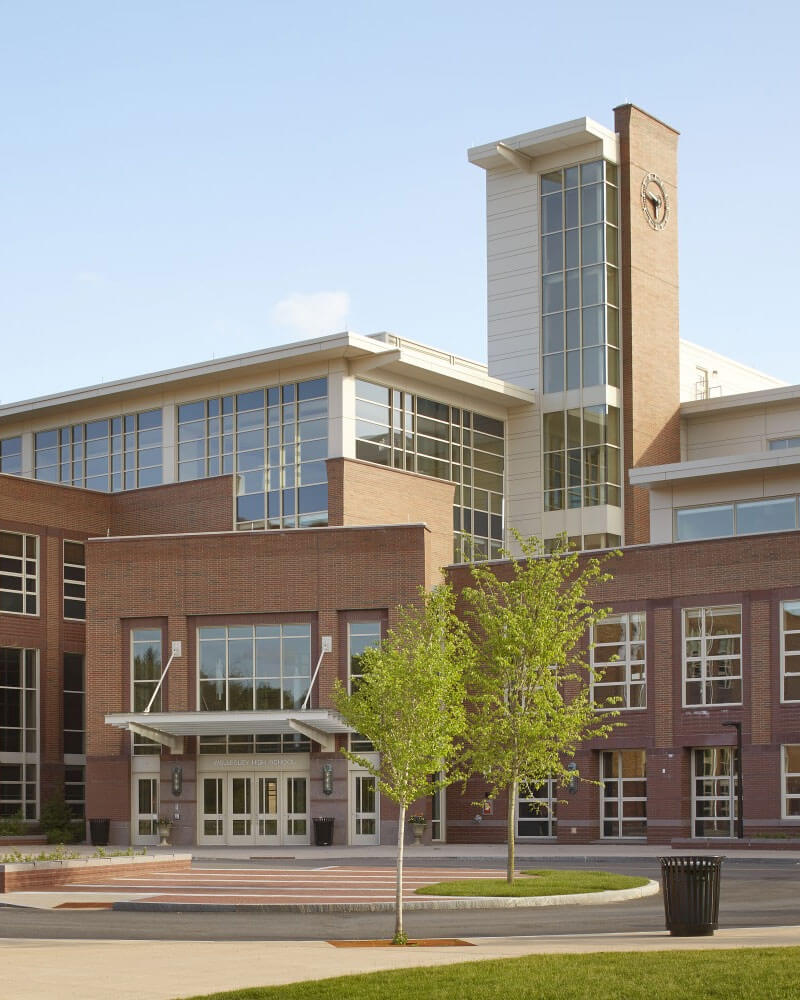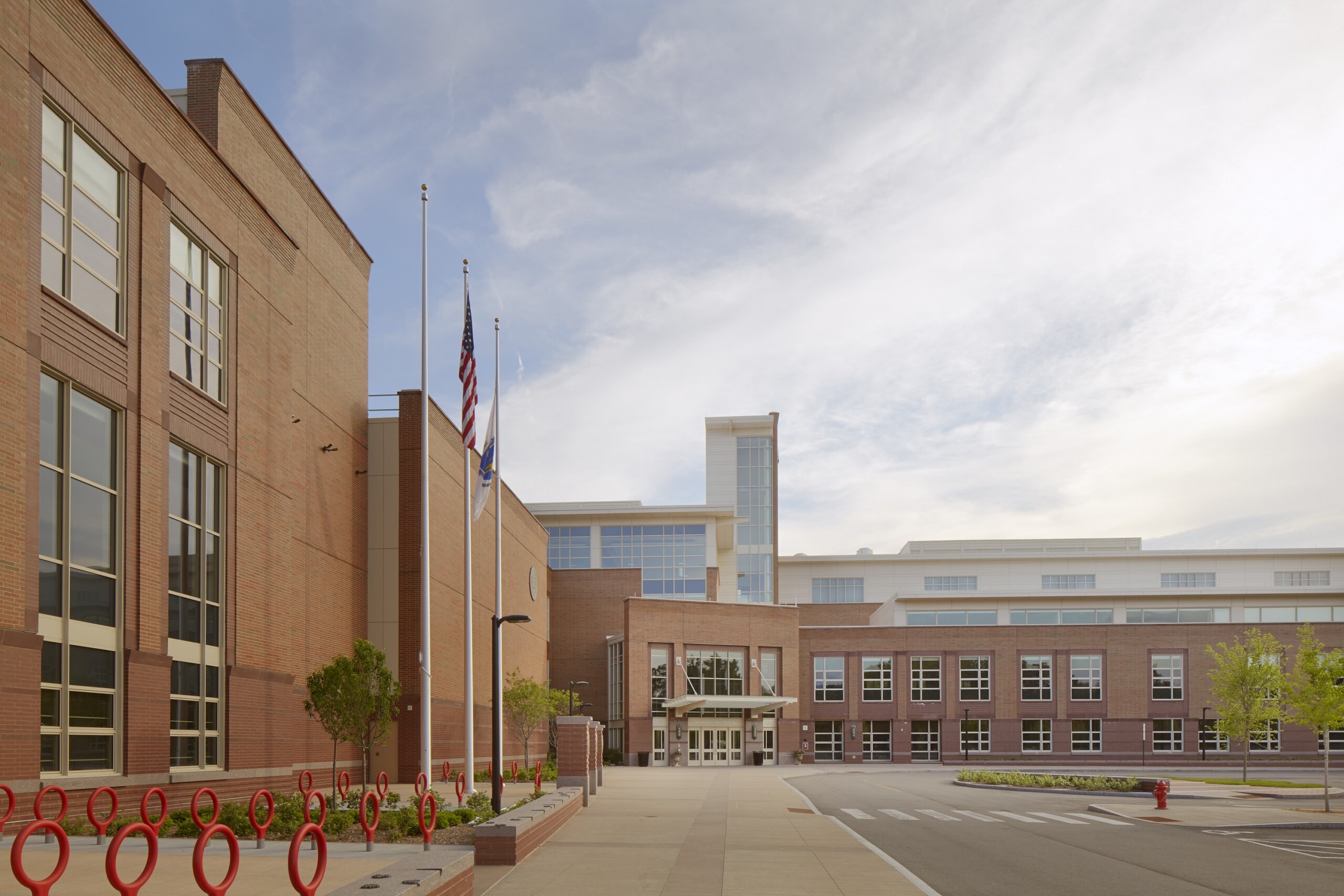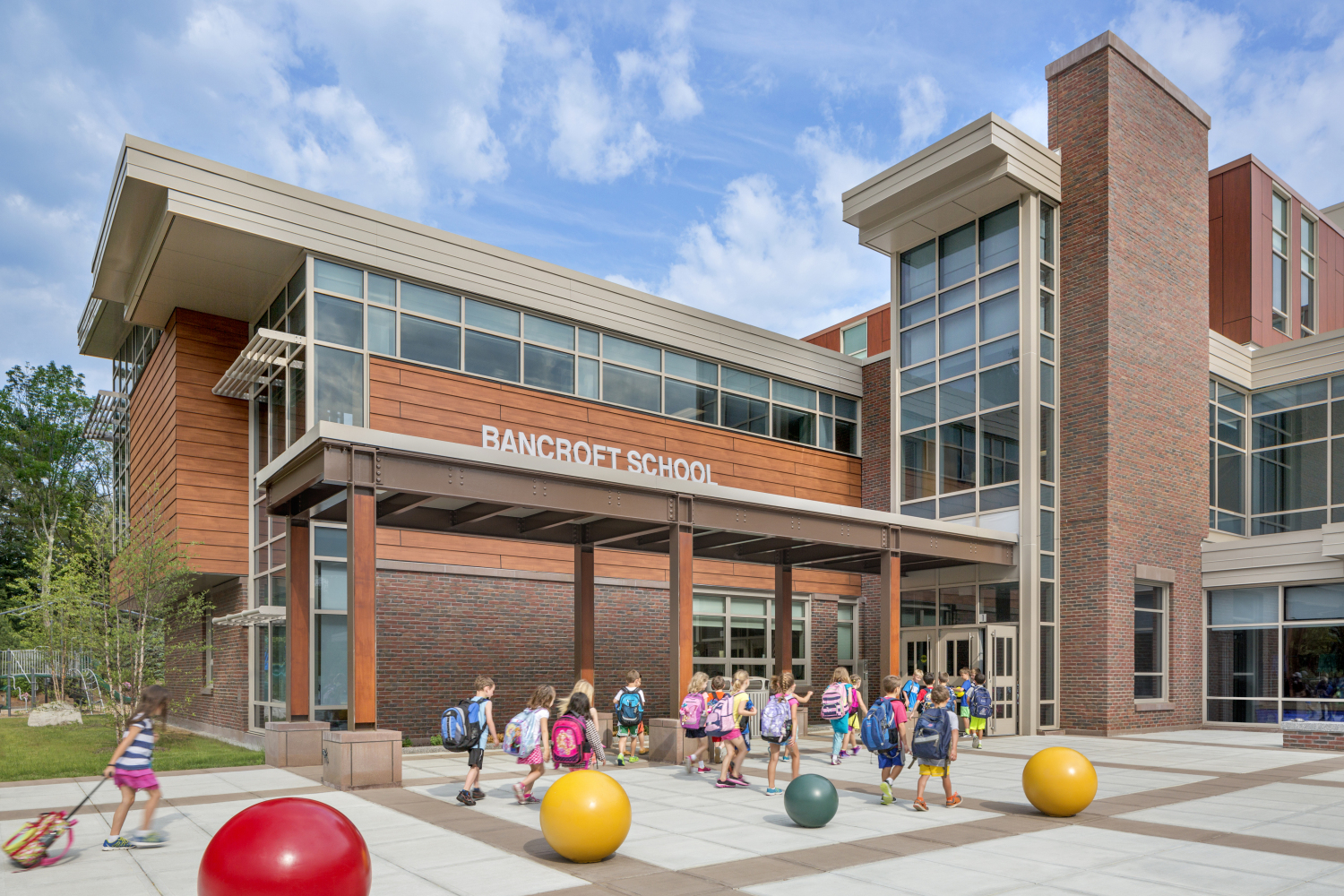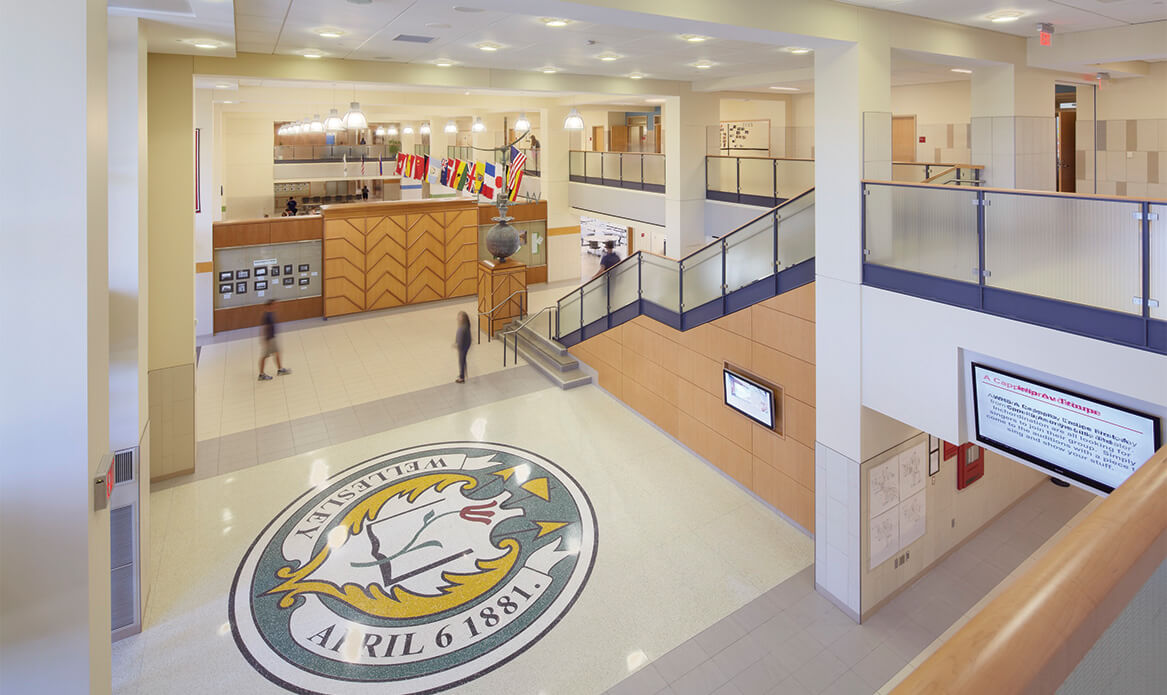
Several elements of the original 1938 building were restored and utilized in the new structure, including an historic 18-foot tower cupola and its eagle weathervane, which serves as a sculpture in the main entrance. During construction, educational activity continued within the shifting perimeters of the existing building and neighborhood.
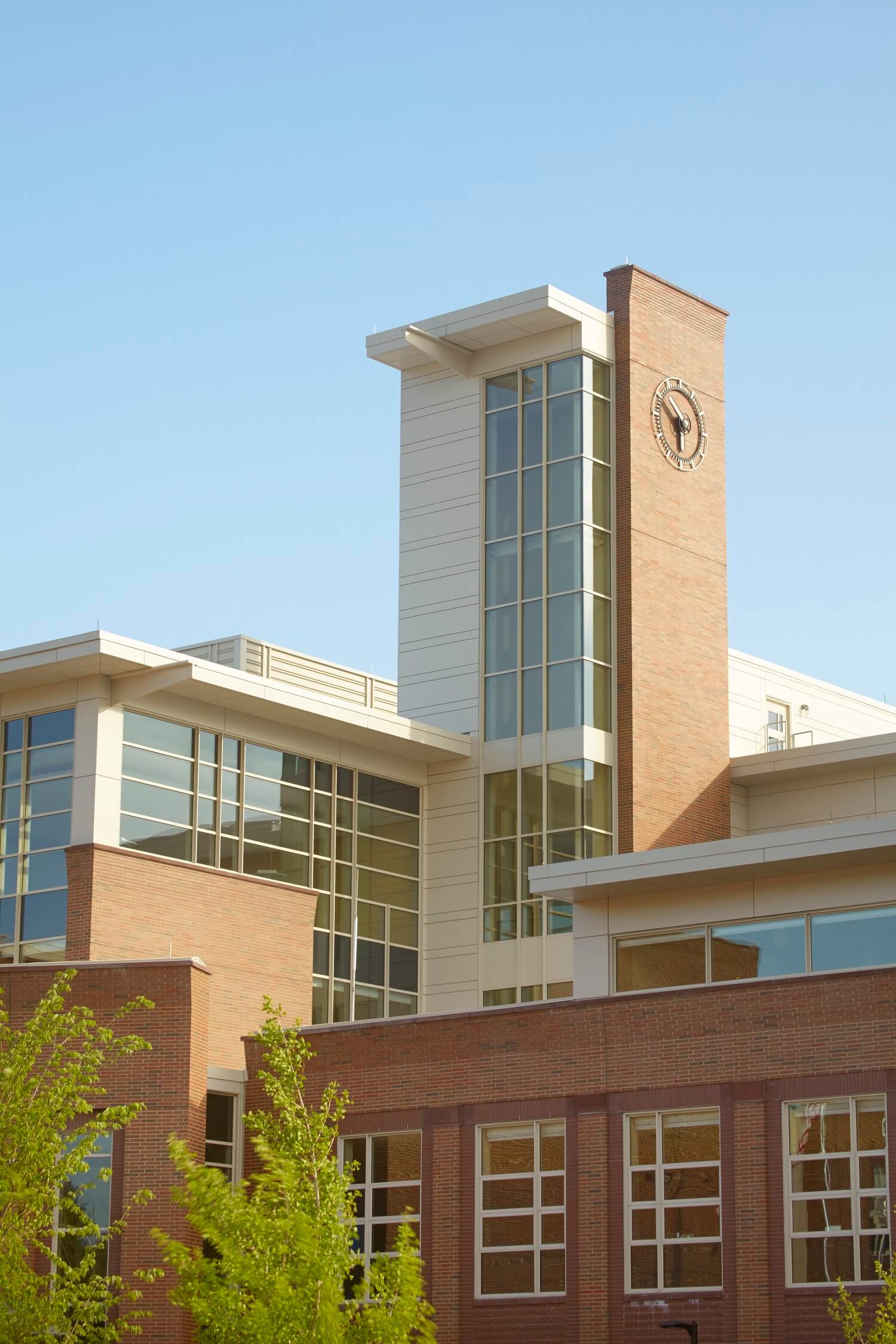
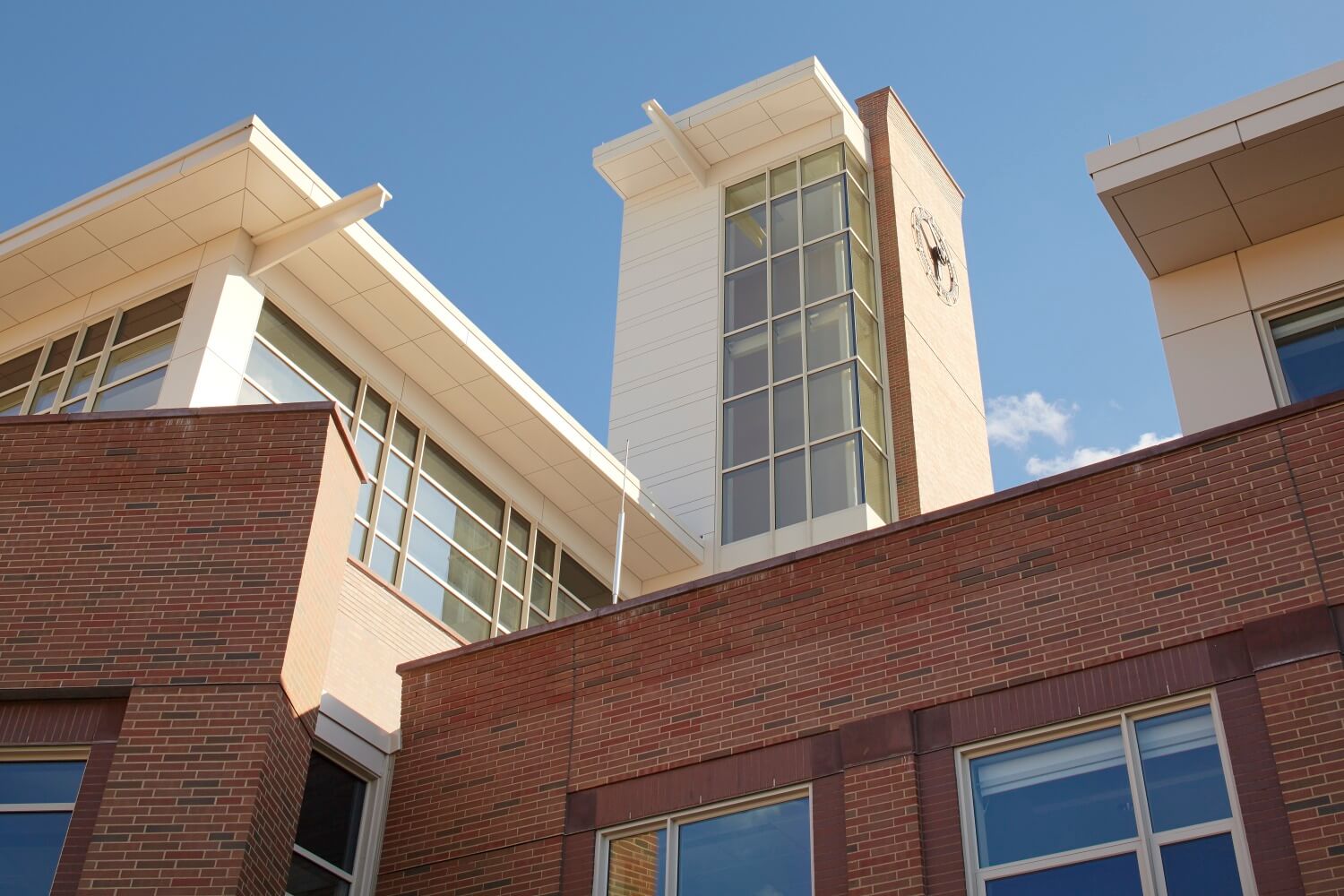
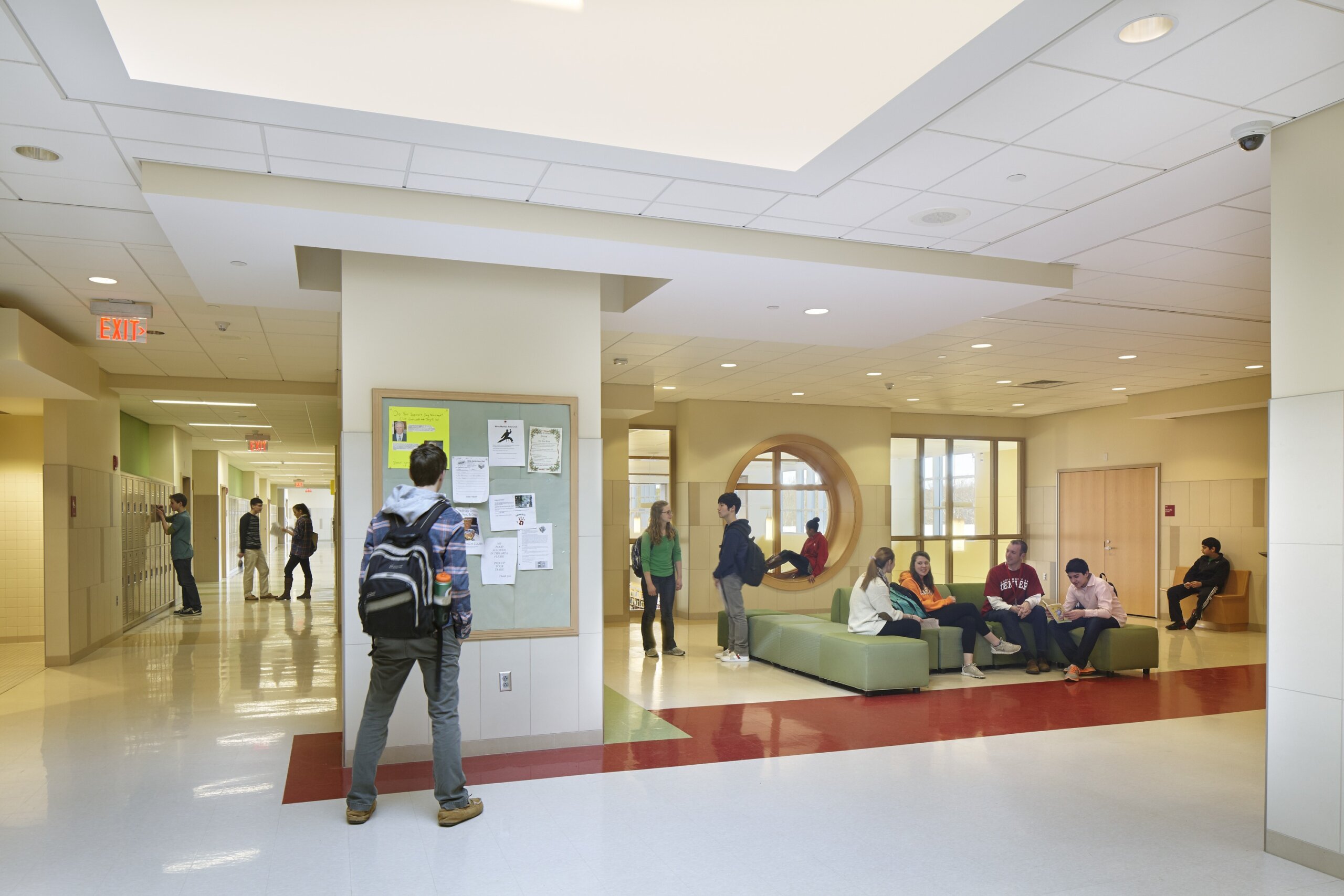
A compact and efficient plan vertically links the programmed labs and classrooms through four core gathering spaces.
The dining hall, library, theater, and gymnasium organize movement through the building. The design responds to the educational plan while fostering informal student social encounters.
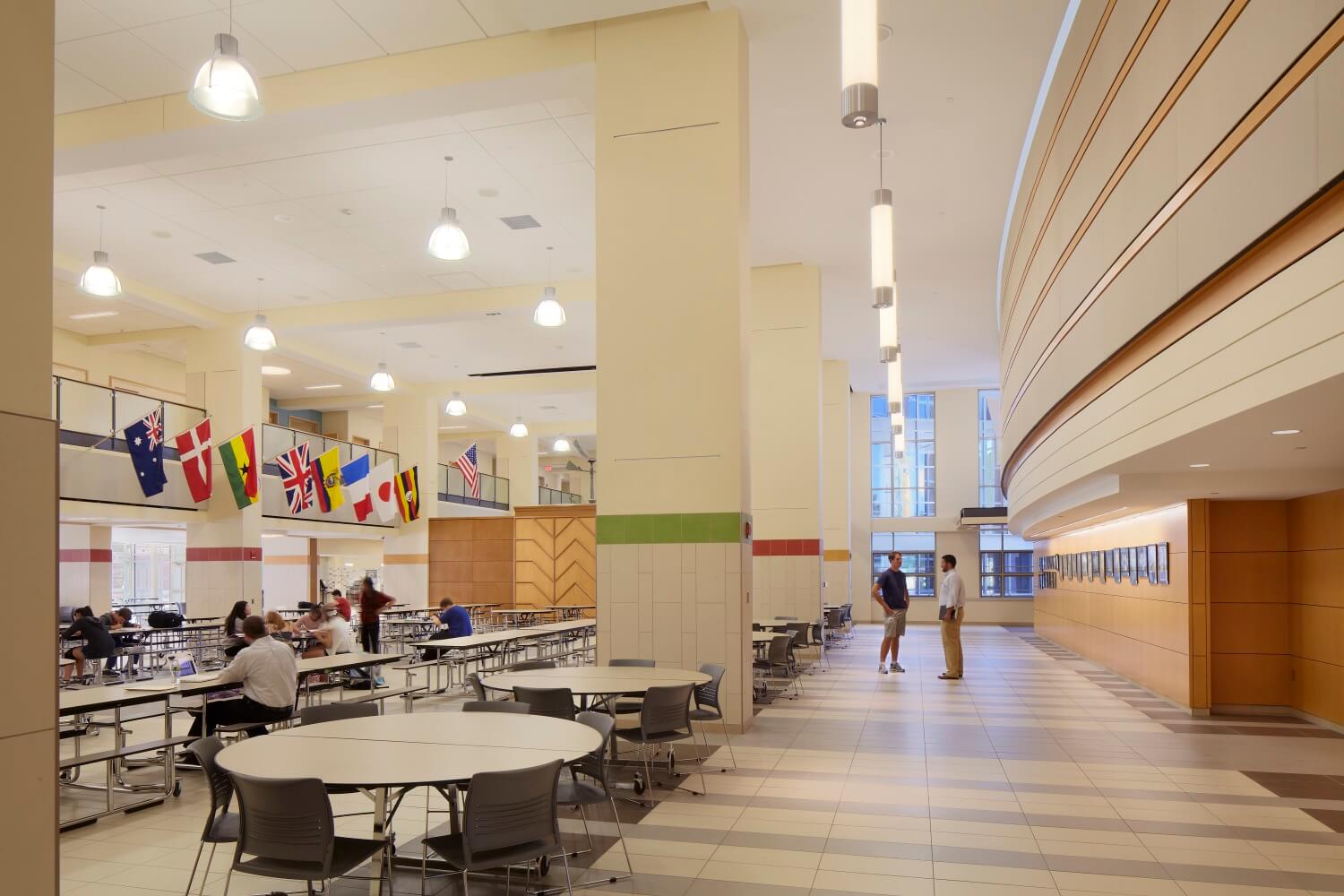
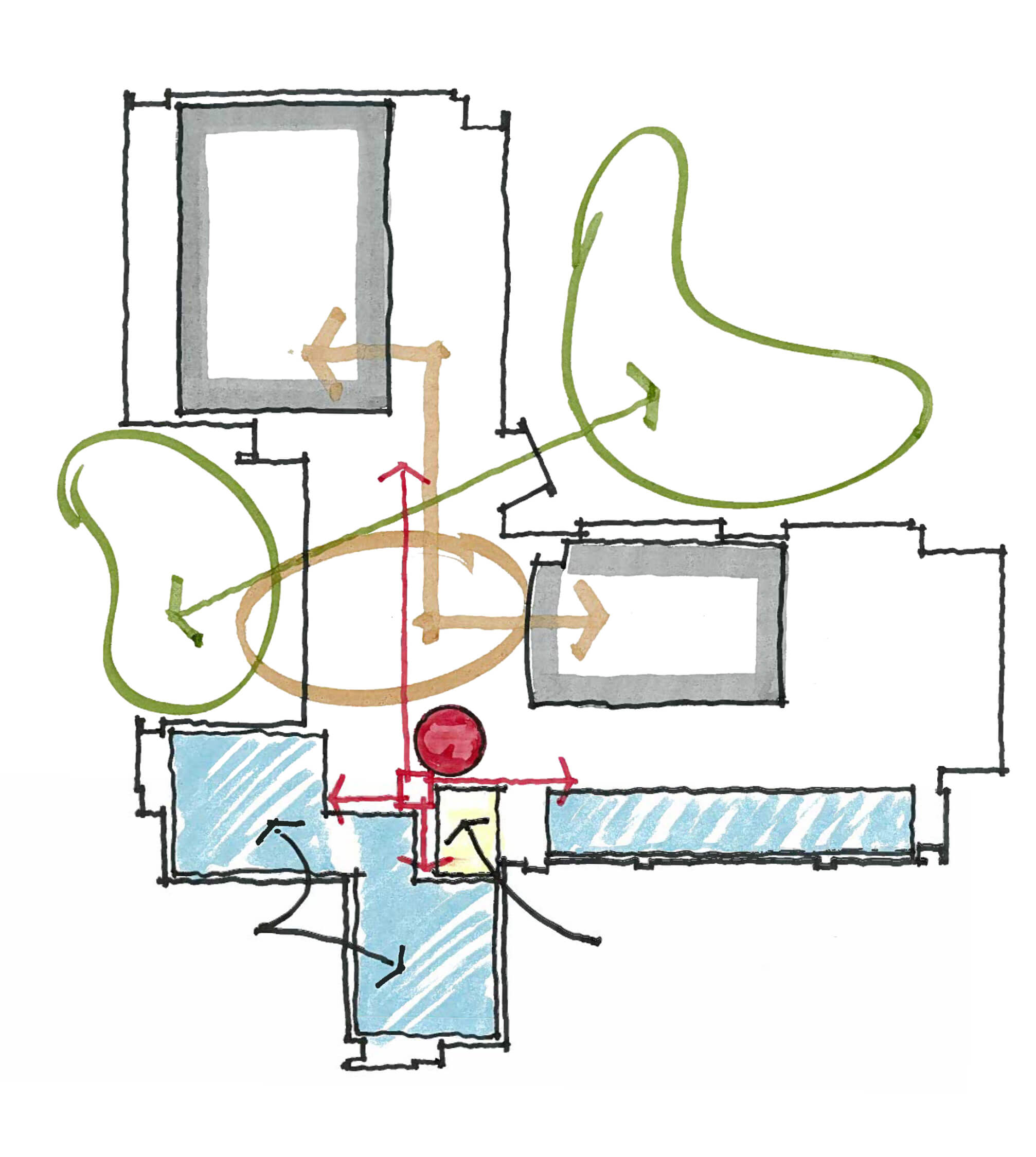
Students are welcomed by a flexible dining commons extending to a series of “living room” hubs at each floor. The design prioritizes access to primary student gathering spaces for those with physical disabilities.
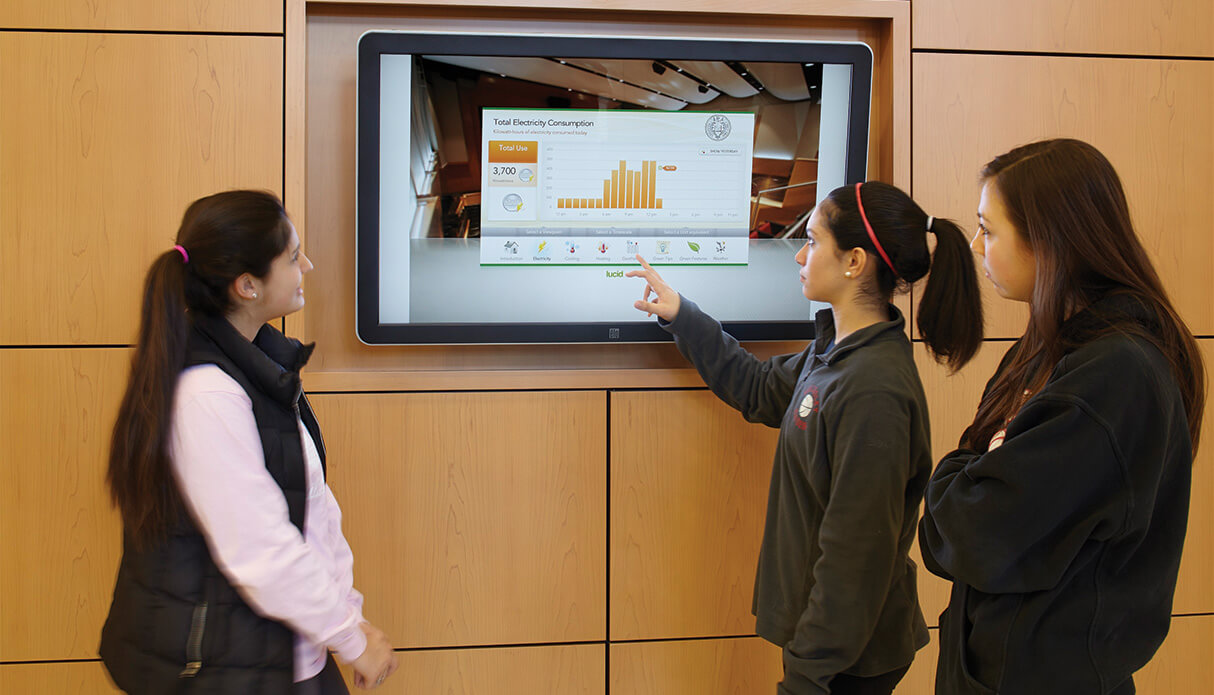
Exposed environments reinforce opportunities for hands-on and active learning.
A data-acquisition system in the lobby allows students to assess and interpret real-time information regarding building energy usage and conservation.
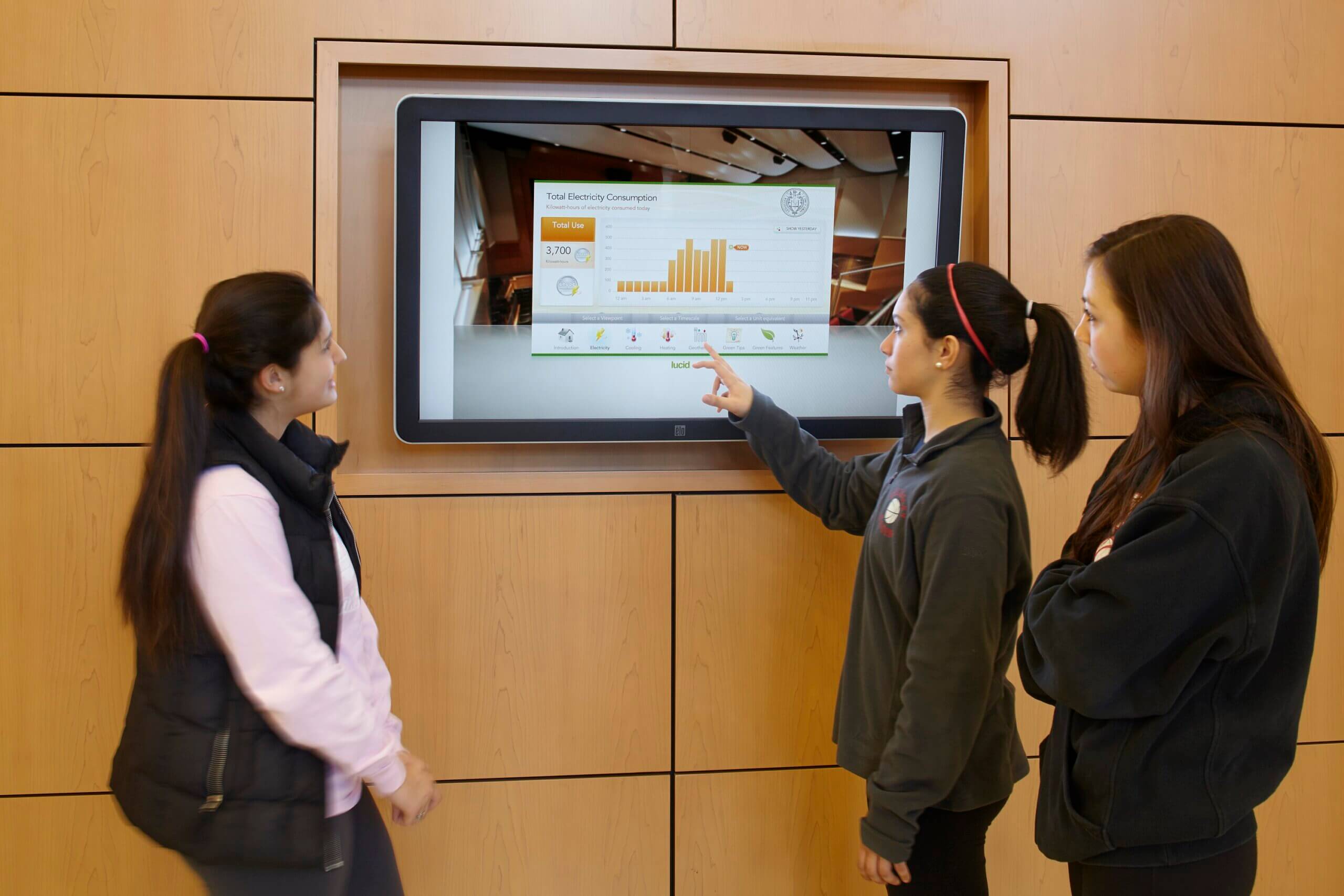
Exposed environments reinforce opportunities for hands-on and active learning.
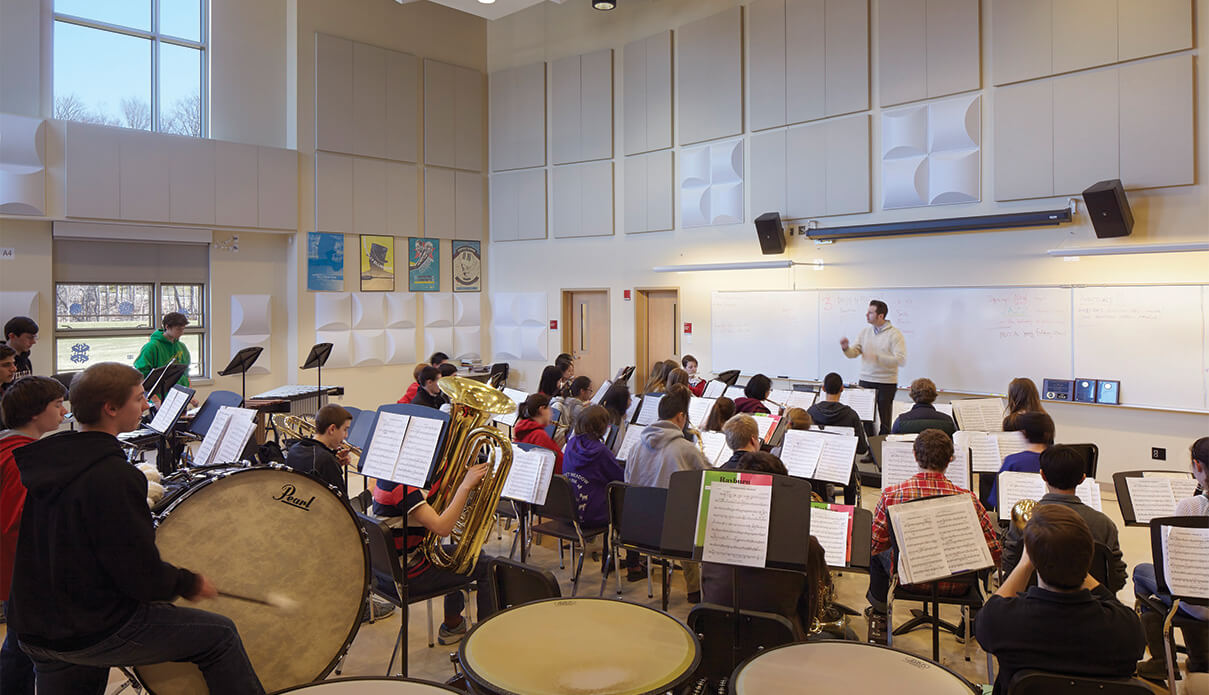
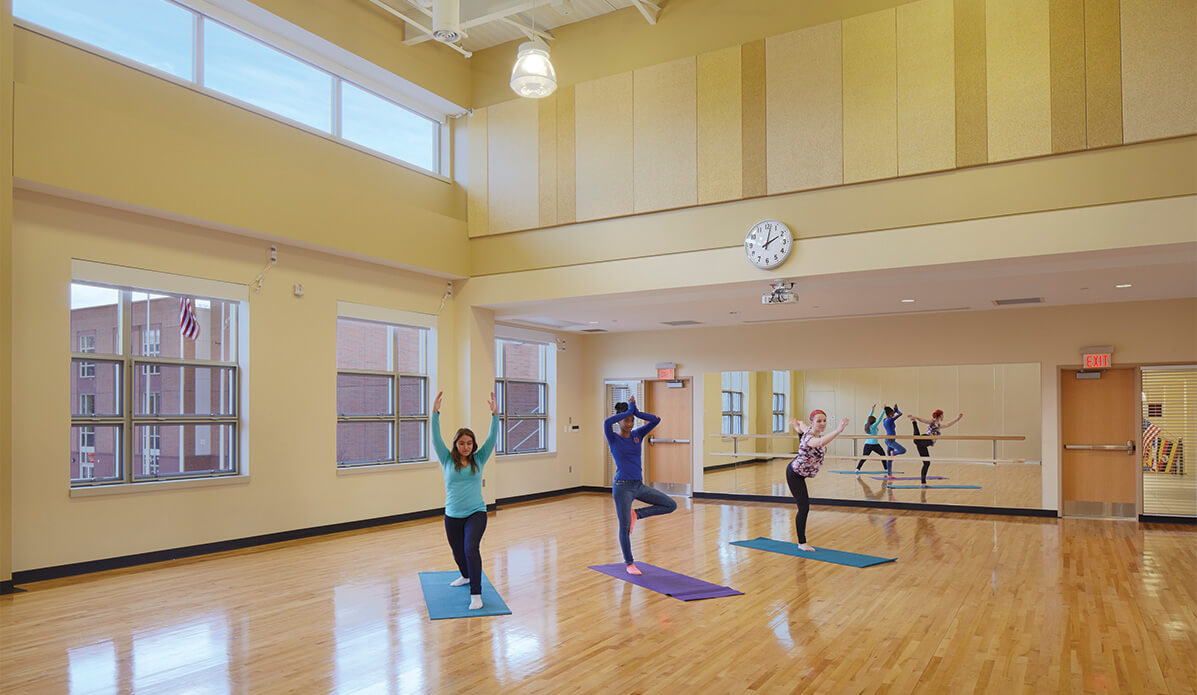
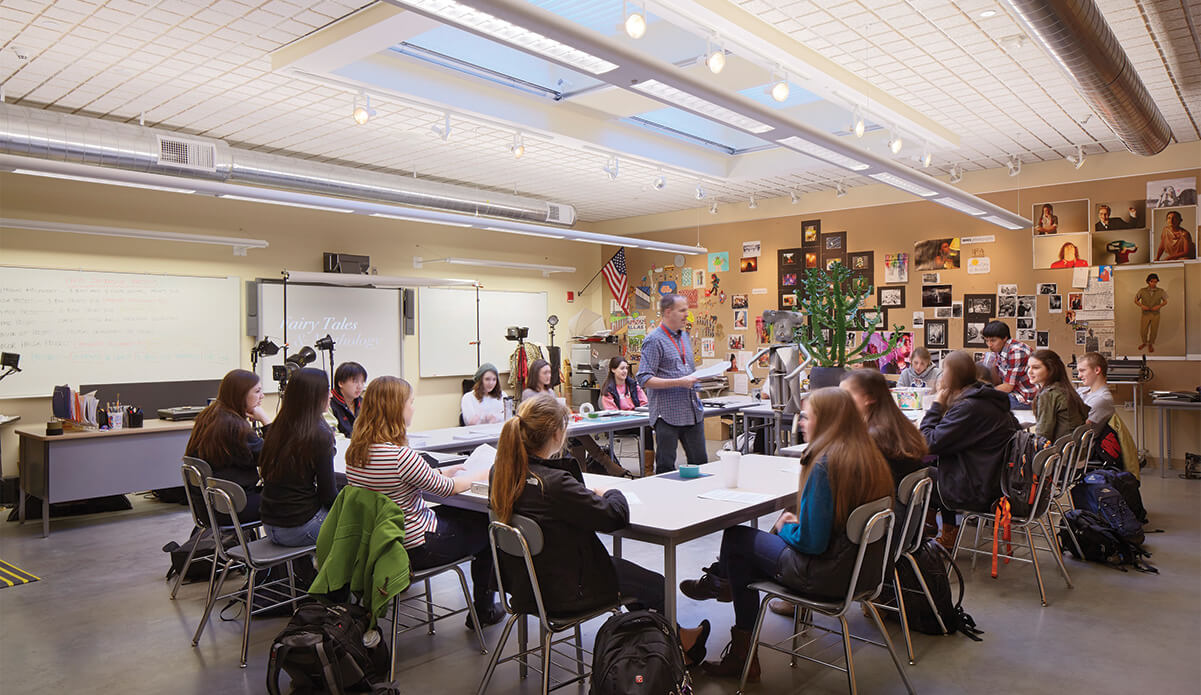
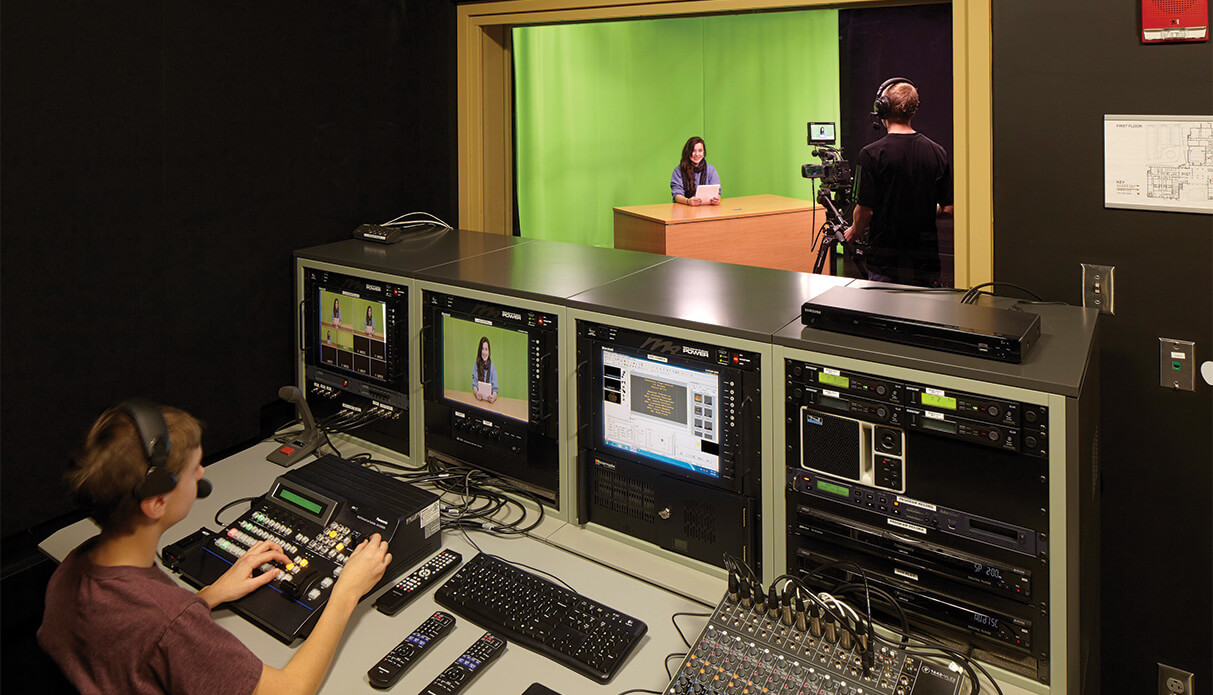
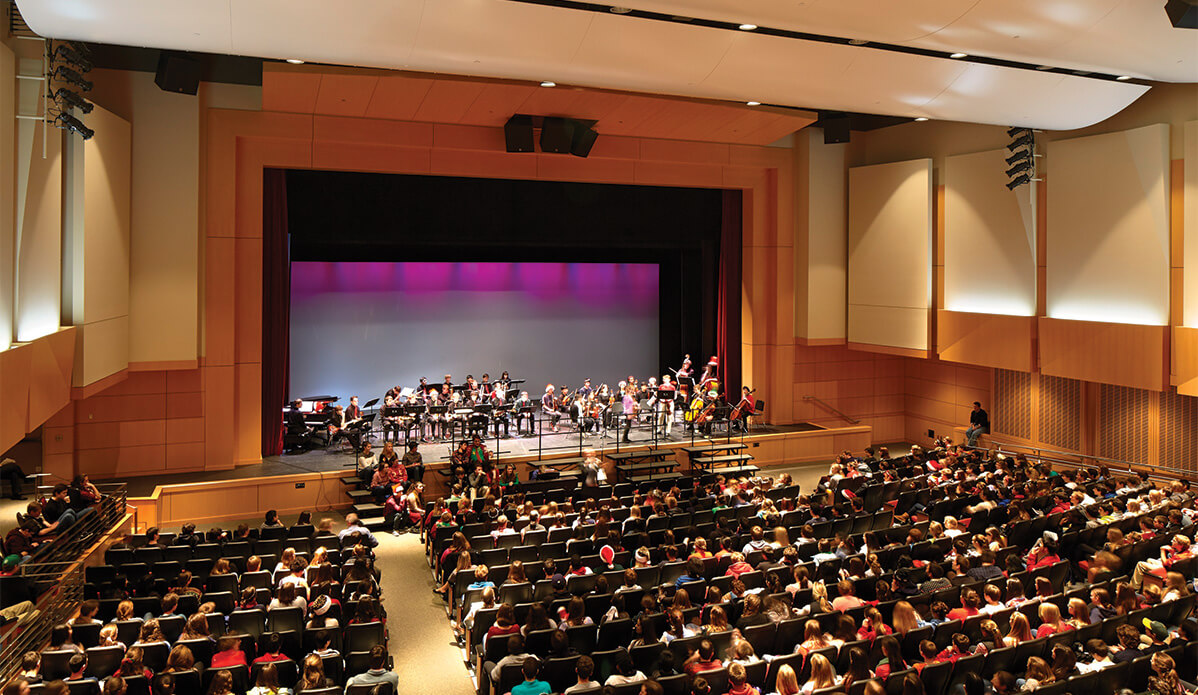
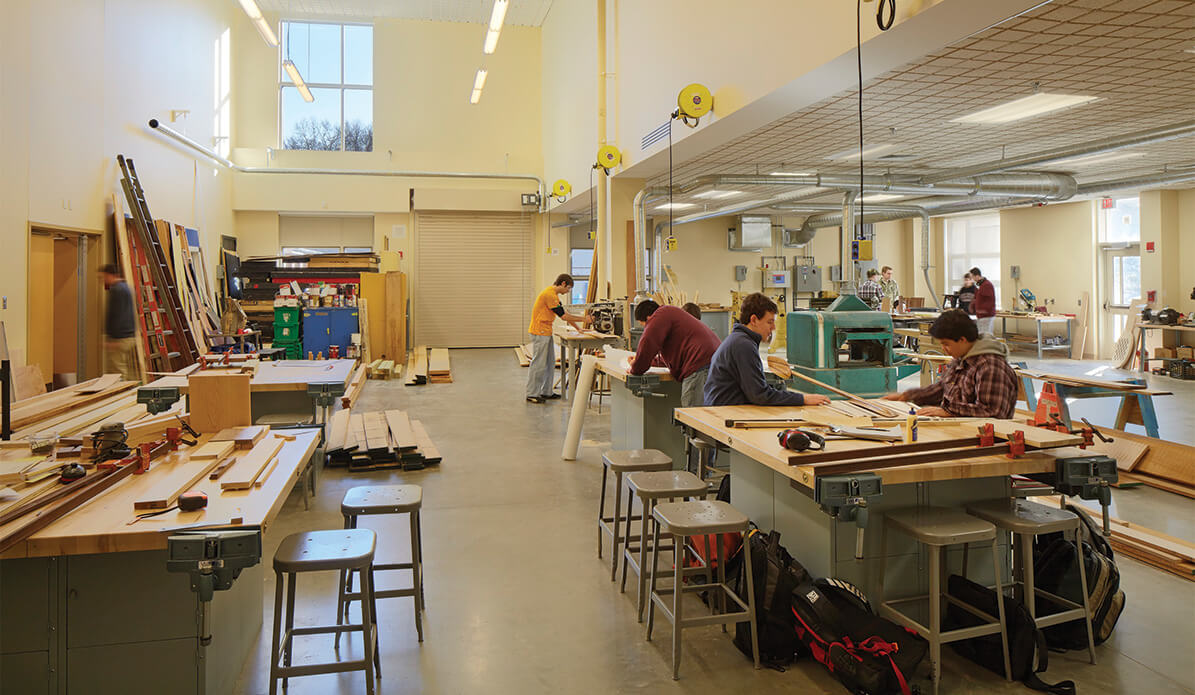
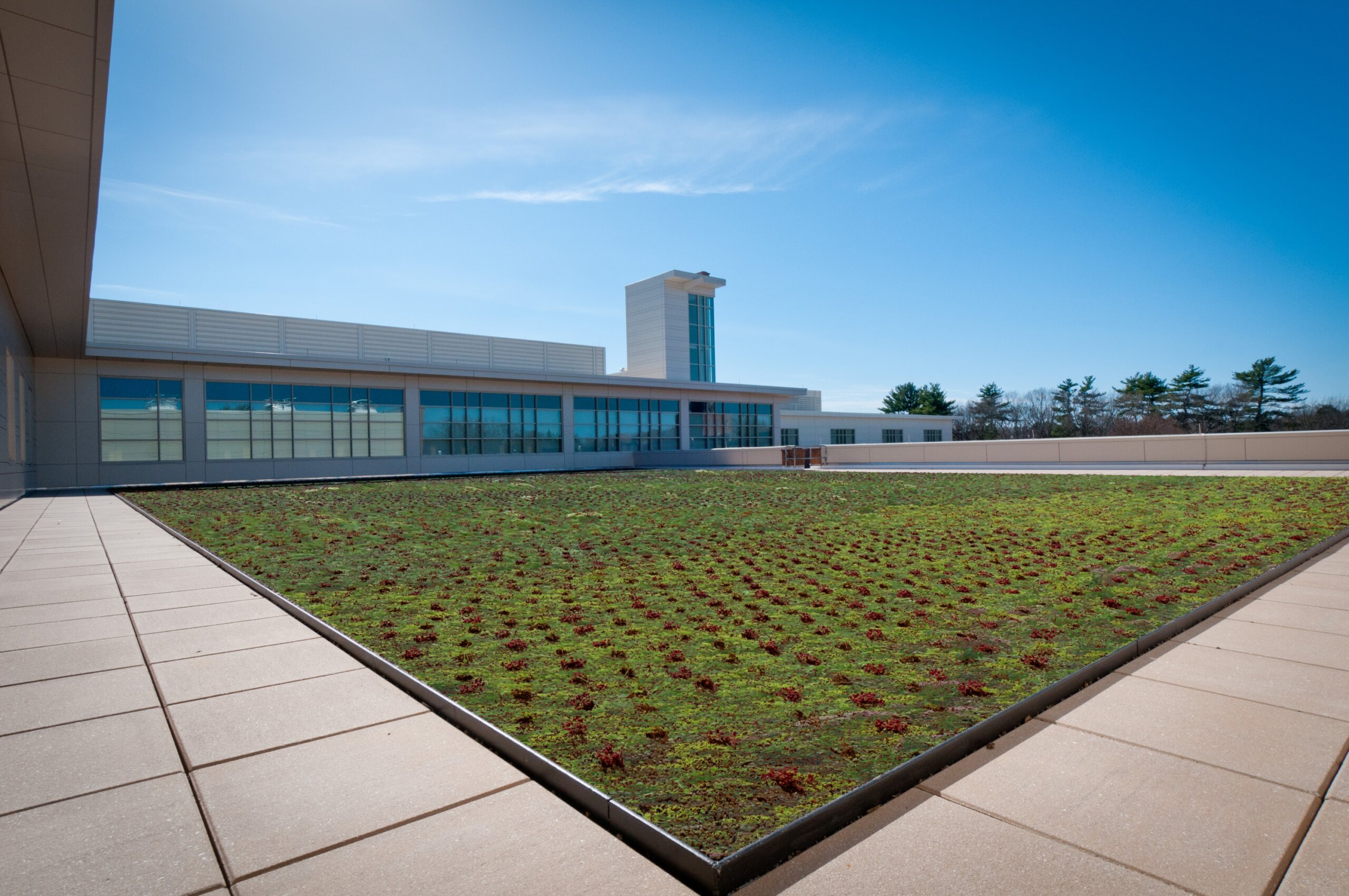
A 7,000 sf green roof is located next to STEM labs, facilitating its incorporation into the curriculum.
The green roof captures biophilic design’s intent to enhance skills essential to learning: comfort, creativity, and individual satisfaction.
Other sustainability and wellness design features include:
Window glazing, exterior sunshades, and sloped classroom ceiling contribute to abundant daylight, exterior views, and reduced glare in classrooms and other spaces.
Skylights provide filtered northern light to the art rooms and student commons.
Daylight sensors adjust artificial lighting, responding to changes in natural light.
Low-emitting volatile organic compound (VOC) materials support better air quality in the building.
Operable windows and transoms increase natural ventilation in the classrooms. In the auditorium and library, displacement ventilation improves air quality.
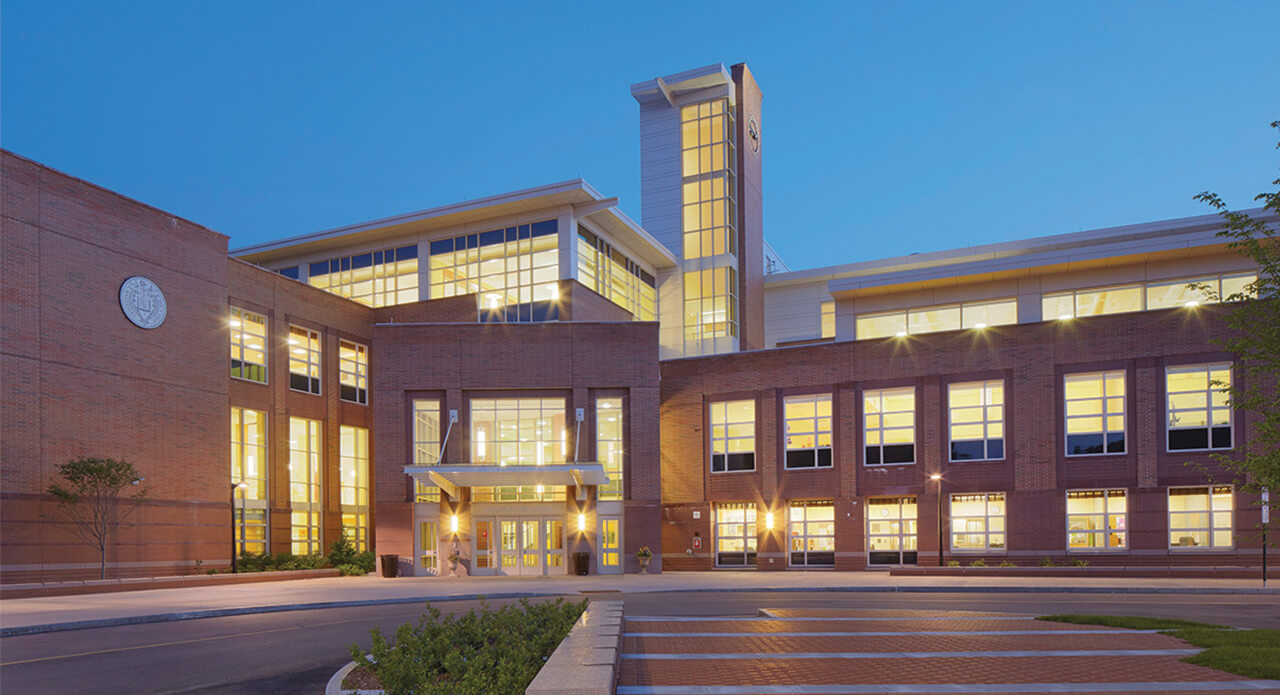
Wellesley High School was designed to use approximately 40% less energy than a code compliant school building in Massachusetts. In design, the predicted Energy Use Intensity (EUI) was 45 kBtu/sf-yr, in comparison with MA code compliancy of 78.
After tracking energy use for two years post construction, the final EUI of 44 kBtu/sf-yr surpassed the original design goal.
This success can be attributed to a high performance, air-tight building enclosure; a geothermal system that provides heating and cooling for the administrative office; a 50 kilowatt (kW) photovoltaic system that produces enough electricity to operate 900 laptop computers; and the use of Energy Star rated equipment throughout the building.
7,000
SF
green vegetated roof
1.5
MILLION
gallons of potable water saved annually
30%
water efficiency
50%
FCS certified wood
MA-CHPS
certification for green schools
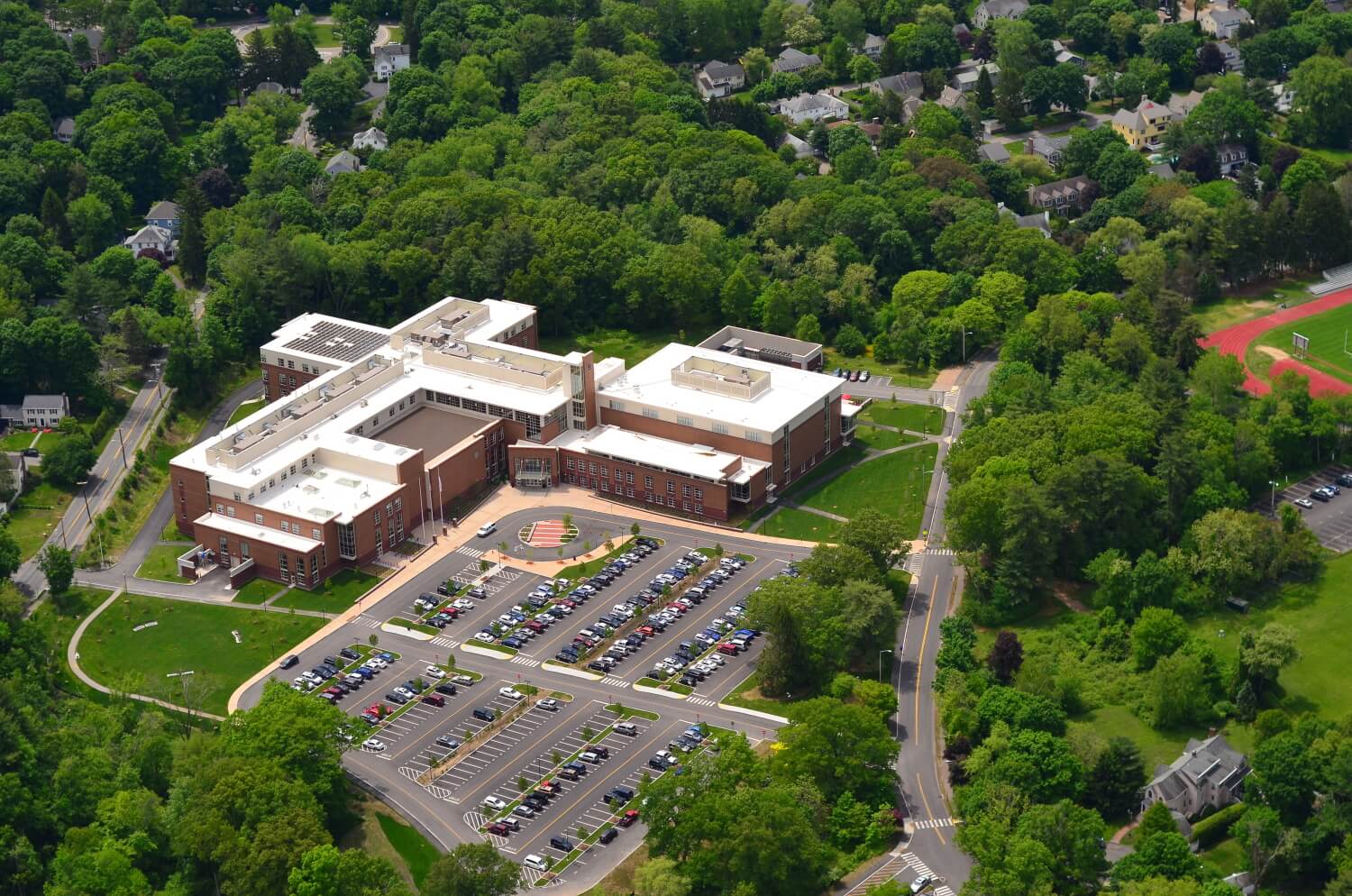
The planning, permitting, and site design called for extensive permitting for the project’s wetlands and designation as a Project of Significant Impact.
Six Months Ahead of Schedule
|Timing was everything for the Wellesley High School project. To complete the phased construction on a schedule that would minimize impacts to the students and staff, the complicated permitting process required a fast-track schedule. SMMA’s in-house team worked closely with permitting authorities and the client to earn quick approvals so that construction could begin. Our successful permitting effort led to the construction of the new high school six months ahead of schedule.
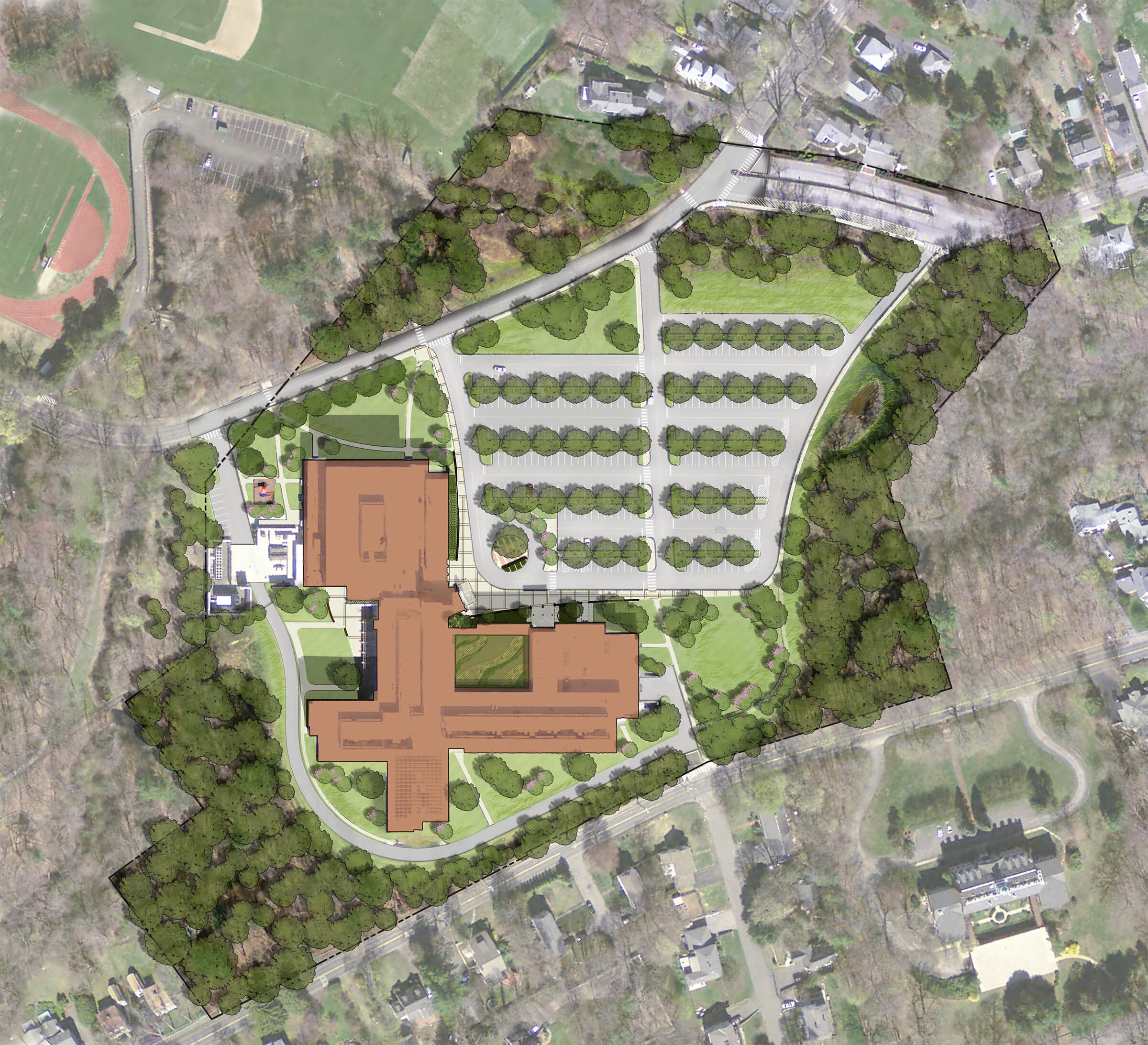
Both the site plan approval from the Zoning Board of Appeals and the Project of Significant Impact approval from the Planning Board were detailed filings that included extensive information regarding zoning; traffic, noise, and historic impacts; stormwater; utilities; town infrastructure; geotechnical considerations; building, pedestrian, and bicycle safety; and refuse disposal and recycling.
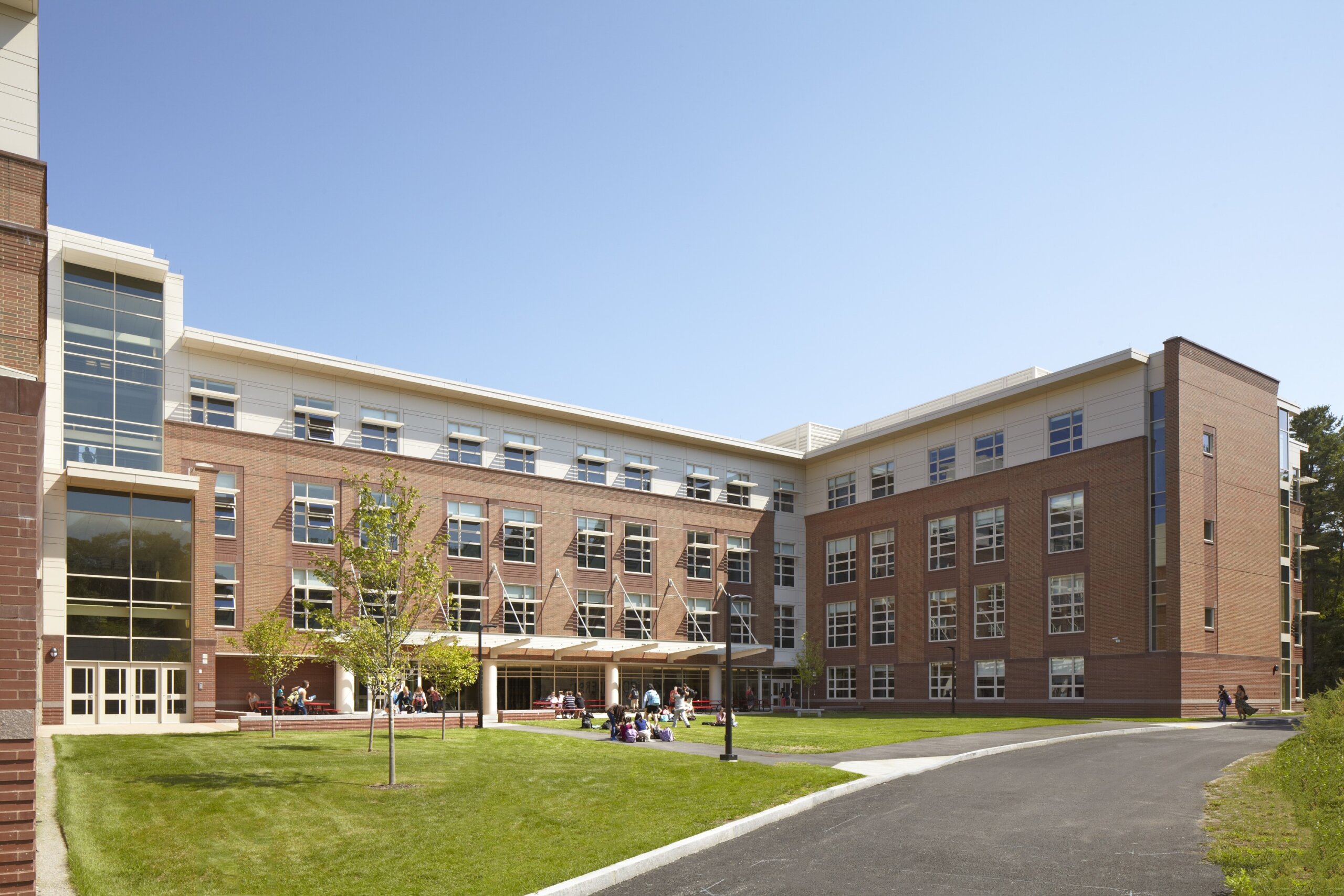
The new Wellesley High School offers the opportunity to better integrate users of all abilities.
Students with physical disabilities enjoy common access to primary student gathering spaces, while the hub concept allows for minimal travel time between classes. Additionally, the building includes a discrete alternative high school that serves special-needs students and is a bridge program between high-risk and non-high-risk student learning.

